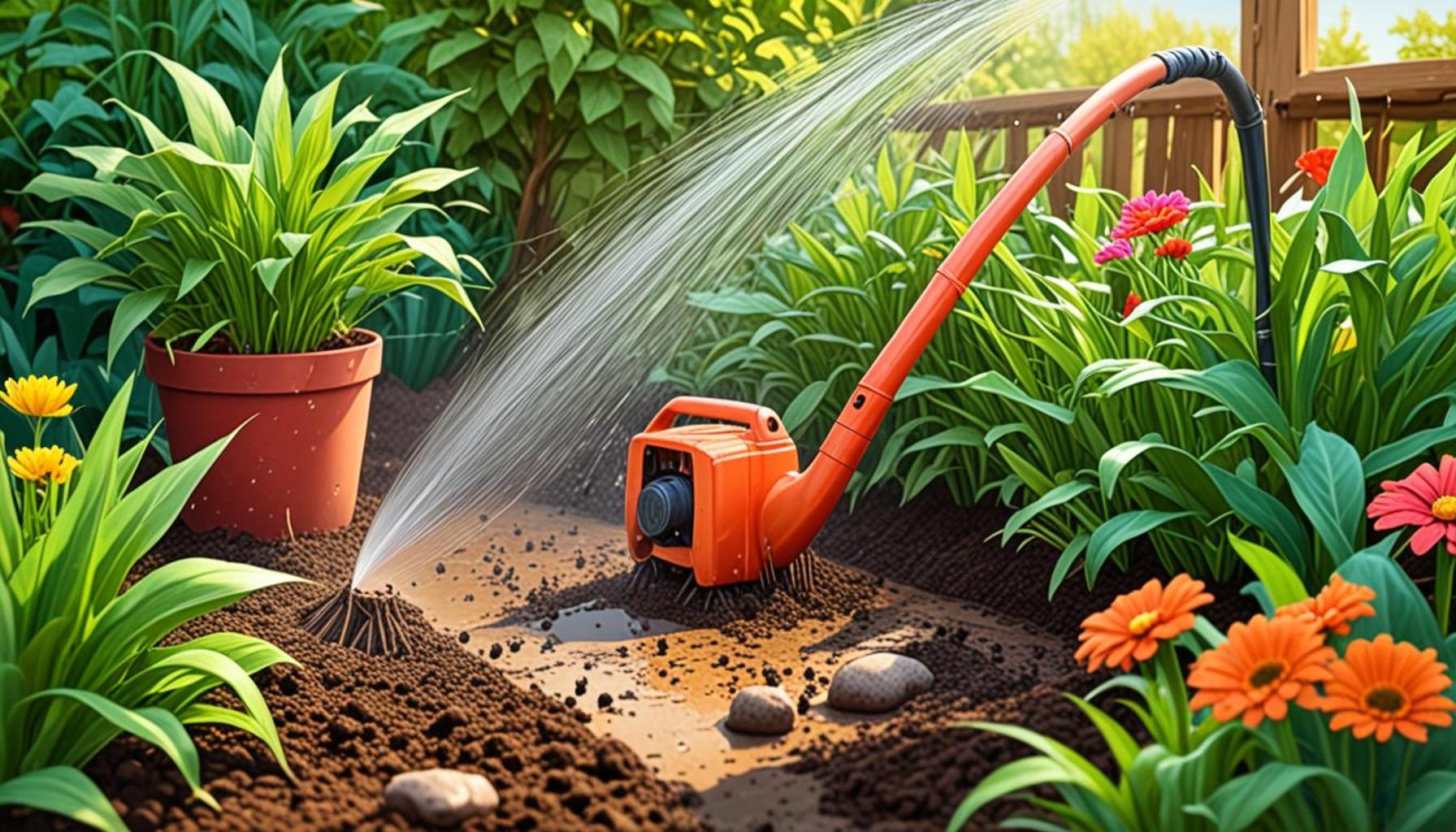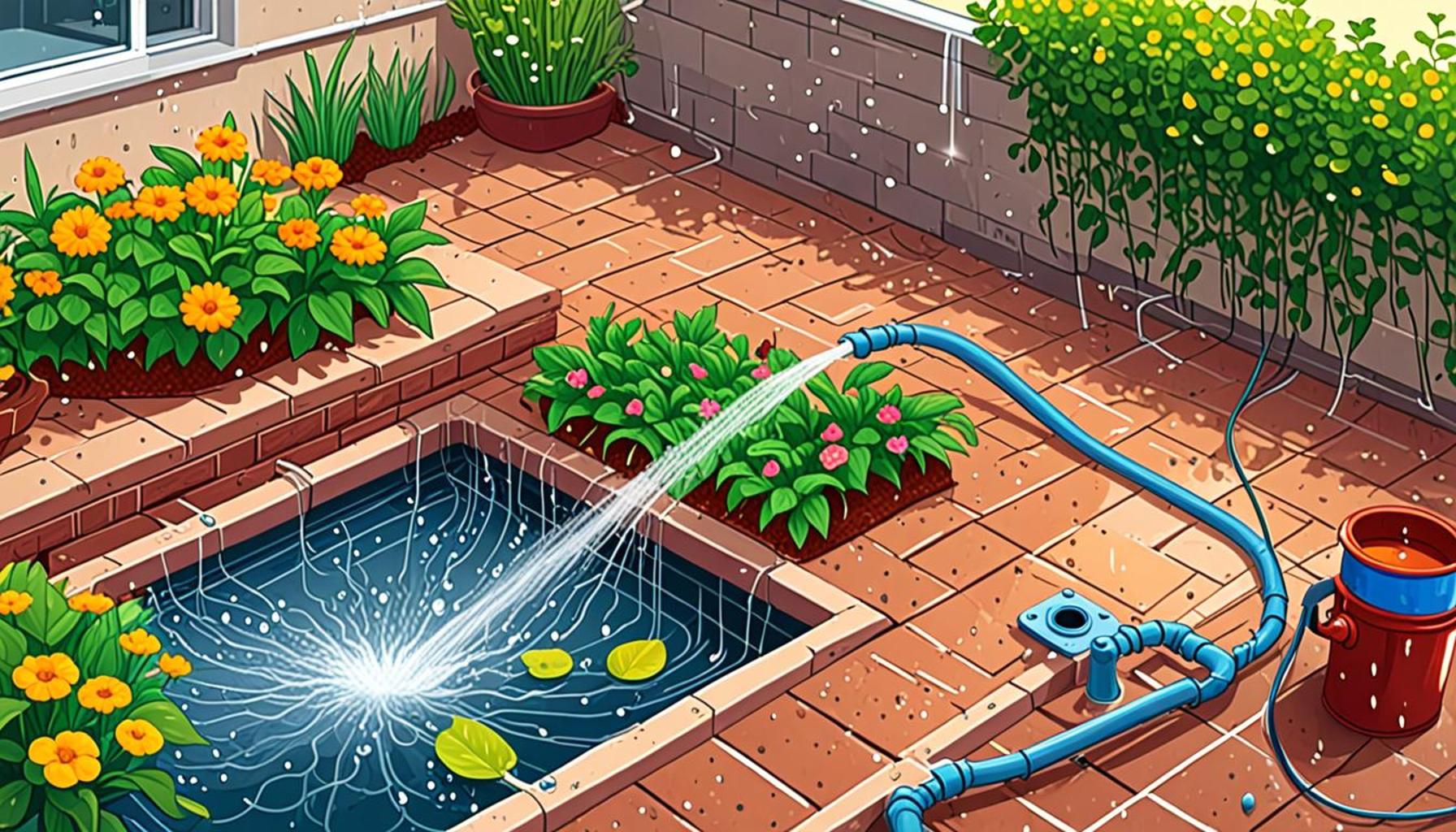How Temperature and Humidity Influence Irrigation Techniques

In-Depth Look at Temperature’s Influence on Irrigation
Temperature plays a pivotal role in determining how effectively irrigation can nourish crops. When we talk about high temperatures, it’s important to recognize that increased heat can lead to significantly higher evaporation rates. For instance, during the peak summer months in states like California and Arizona, daytime temperatures can soar above 100°F. Under these conditions, water can evaporate from soil and plants at alarming speeds, leading to a scenario where crops suffer from dehydration if irrigation systems are not adequately adjusted.
On the flip side, lower temperatures can correlate with reduced water demand for plants. For example, in the Midwest during the cooler spring months, crops like corn may not require as much irrigation since the cooler temperatures help retain moisture in the soil. Understanding these nuances can inform farmers when to use less water, thereby conserving resources.
Moreover, different crops have specific temperature ranges in which they flourish. For example, tomatoes grow best in temperatures ranging from 70°F to 85°F, while a crop like wheat prefers cooler conditions. This means that regional variations in temperature not only dictate when crops are planted but also how irrigation systems should be managed throughout the growing season.
The Role of Humidity in Irrigation Strategy
Just as temperature affects irrigation, humidity is another crucial factor that shapes watering strategies. In regions where humidity levels are high, such as the Southeast, farmers may experience a decrease in water loss from their crops. This reduced evaporation can lead to more efficient irrigation practices, allowing farmers to focus on other critical aspects of crop management instead of constantly battling moisture loss.
Conversely, in arid areas such as New Mexico or Texas, where humidity is consistently low, irrigation systems face greater pressures to meet plant demands. Here, farmers might have to increase the frequency and amount of irrigation to compensate for the heightened loss of moisture. This situation necessitates a careful balancing act—over-irrigation can lead to waterlogging and nutrient leaching, while under-irrigation can cause plant stress and reduced yields.
Additionally, humidity influences the timing of watering, which can significantly affect nutrient absorption. For example, watering in the early morning or late afternoon, when humidity levels might be higher, can minimize evaporation and ensure that more water penetrates the root zone. In contrast, irrigating during peak daytime heat can waste valuable water and ultimately hinder crop growth.
The Need for Adaptated Irrigation Practices
This intricate interplay between temperature and humidity highlights the necessity for tailored irrigation practices. Farmers must thoroughly understand local weather patterns and adjust their methods accordingly to promote optimal crop health while conserving vital water resources. Innovations such as drip irrigation, which delivers water directly to the plant’s roots, and smart irrigation controllers that automate watering based on real-time weather data, are becoming essential tools in modern agriculture.
As climate variability intensifies across the United States, the ability to adapt to these shifting conditions will become increasingly important. With a keen understanding of temperature and humidity impacts, agriculturalists can employ effective strategies to maximize yields while conserving precious water. This approach not only supports sustainable farming practices but also addresses broader environmental challenges posed by climate change.
LEARN MORE: Click here to discover the best harvesting tips
Understanding the Impact of Temperature on Irrigation Techniques
When discussing irrigation techniques, temperature cannot be overlooked. It significantly affects not only the rate of water evaporation but also the water needs of different crops. During sweltering heat, such as in the summer months across many regions of the United States, transpiration rates in plants increase. This leads to higher water consumption, necessitating carefully adjusted irrigation schedules to prevent crop stress.
For instance, in arid states like Nevada, where temperatures can reach upwards of 105°F, farmers using traditional flooding methods may find themselves at a disadvantage. Instead, adopting drip irrigation systems, which minimize water loss through evaporation by delivering water directly to the plant roots, can prove far more effective under high-temperature conditions.
On the other hand, cooler climates present different challenges. In regions like the northeastern U.S., where temperatures may average between 50°F and 70°F during the spring season, crops tend to have lower caloric demands for water. Here, farmers might strategically plan irrigation schedules to coincide with natural rainfall patterns, ensuring that resource utilization is as efficient as possible.
Optimizing Irrigation Based on Temperature Variability
Farmers are increasingly tasked with adapting their irrigation strategies based on fluctuating temperature patterns. To effectively manage water usage, they should consider the following factors:
- Seasonal Temperature Trends: Understanding the expected temperature range for each growing season can help in planning irrigation schedules and methods.
- Crop-Specific Needs: Different crops have varying tolerances to temperature changes. For example, heat-loving crops such as peppers may thrive under high temperatures, whereas others like lettuce might require cooler conditions.
- Localized Weather Patterns: Farmers should stay informed about localized weather forecasts that may predict heat waves or cold snaps, allowing for timely adjustments in irrigation.
Furthermore, extreme temperature events can disrupt traditional farming schedules. For example, a sudden heatwave in the Midwest during early summer can dry out the soil unexpectedly, prompting farmers to react quickly to safeguard their crops. Advanced systems, such as smart irrigation controllers that adjust watering based on real-time temperature data, can be essential in these instances, preventing water waste while ensuring that crops stay hydrated.
The ability to quickly adapt to changing temperature conditions is increasingly critical for agricultural success. Farmers who embrace innovative technologies and practices will not only enhance their productivity but also contribute to broader sustainability efforts in water resource management. As the climate continues to evolve, understanding the relationship between temperature and irrigation techniques will become essential in promoting environmentally responsible farming practices.
| Category | Advantages |
|---|---|
| Temperature Adaptation | In warmer climates, irrigation schedules are adapted according to increased evapotranspiration rates. |
| Humidity Regulation | High humidity conditions require careful water management to prevent waterlogging and crop diseases. |
| Irrigation Efficiency | Understanding local weather patterns helps in designing efficient irrigation systems that conserve water. |
| Crop Yield Optimization | Monitoring temperature and humidity levels can enhance crop yield by optimizing water usage during critical growth stages. |
Understanding how temperature and humidity affect irrigation practices is essential for modern agriculture. With the changing climate, farmers must adapt their irrigation methods to ensure optimal water usage. For instance, in areas where temperatures soar, implementing drip irrigation or scheduling watering during cooler parts of the day can significantly reduce evaporation rates. Conversely, in high humidity regions, applying techniques that promote drainage and prevent stagnant water are crucial to safeguard crops from fungal diseases. Moreover, utilizing technologies such as climate-responsive irrigation systems can lead to better resource management. These innovations not only contribute to sustainable farming but also ensure agricultural resilience against climate variability. As farmers integrate these factors into their irrigation strategies, they can expect not only improved efficiency but also a boost in overall productivity and crop health.
DISCOVER: Click here to learn how to choose the perfect plants for small spaces
The Role of Humidity in Shaping Irrigation Practices
While temperature plays a significant role in agricultural irrigation, humidity also profoundly influences water management strategies. Humidity levels dictate the rate at which water evaporates from the soil and crops. In environments with high humidity, such as the southeastern U.S., crops may not require as much irrigation since the ambient moisture can often support their water needs. On the contrary, low-humidity regions, like parts of California, see increased evaporation and greater water loss, necessitating an increase in irrigation frequency.
For instance, in states like Florida during the summer, where humidity frequently rises above 70%, farmers may leverage the natural moisture in the air to reduce their irrigation workload. This is often achieved through mulching techniques, which help to retain soil moisture while also minimizing the need for water application. However, understanding local weather patterns is vital, as unexpected dry spells can occur even in typically humid climates, requiring farmers to maintain flexibility in their irrigation planning.
Humidity Levels and Crop Water Requirements
The interaction between humidity and temperature is a powerful dynamic that affects the water needs of various crops. When humidity is low, plants tend to transpire more, leading to increased water demands. This phenomenon is especially pronounced during the early morning and late afternoon hours when temperatures are moderate yet humidity is lower. Farmers should consider:
- Plant Physiology: Different crops exhibit varied responses to humidity. For instance, corn and soybeans can tolerate a broader range of humidity levels, while crops such as spinach and carrots may suffer under high-stress conditions.
- Irrigation Timing: Implementing irrigation during the cooler parts of the day can reduce evaporation losses significantly, especially in regions with fluctuating humidity levels.
- Acknowledge Local Variation: Humidity varies not just by region but also by topography and microclimates. Farmers who study local environmental characteristics can optimize their irrigation schedules further.
Moreover, the influence of humidity extends to innovative irrigation technologies. For instance, advanced atmospheric sensors now provide real-time data on humidity levels, allowing farmers to better tailor their watering schedules. This is crucial, particularly in areas experiencing rapid changes in weather patterns due to climate change. Some farmers are turning to smart irrigation systems that automatically adjust water delivery based on both humidity and temperature readings, significantly enhancing water conservation efforts while ensuring crops remain healthy.
As urban development continues to pressure agricultural water supplies, understanding both temperature and humidity becomes increasingly pertinent for sustainable farming practices. Farmers who utilize these climatic indicators can not only augment their yields but also play a significant role in ensuring the responsible use of water resources in an era where those resources are becoming more constrained.
DISCOVER MORE: Click here to learn how to choose the perfect plants for low light!
Conclusion: Navigating the Complex Relationship Between Temperature, Humidity, and Irrigation Techniques
In conclusion, the intricate interplay between temperature and humidity is fundamental to shaping effective irrigation practices in agriculture. Understanding these climatic factors allows farmers to optimize water usage, ultimately leading to enhanced crop productivity and sustainability. High extremes of temperature and low humidity can exacerbate water loss, pushing farmers to adapt their irrigation frequency and methods accordingly. Conversely, in regions characterized by elevated humidity, effective moisture management can reduce irrigation needs, but still requires vigilance given the unpredictable nature of weather patterns.
Additionally, adopting modern technologies such as smart irrigation systems and atmospheric sensors can empower farmers to innovate their practices in response to real-time data, ensuring the efficient allocation of precious water resources. As climate change intensifies and urban development increases pressure on agricultural supplies, it becomes ever more critical for farmers to be proactive in adjusting their irrigation strategies based on evolving climatic conditions.
Ultimately, remaining adaptable and informed in the face of these environmental variables can facilitate better resource management and higher yields. By diving deeper into the synergistic effects of temperature and humidity, farmers not only stand to protect their crops but also contribute to the broader discourse on sustainable agriculture in an era marked by uncertainty. This ongoing commitment to innovative irrigation techniques will serve as a cornerstone in the quest for resilient and productive agricultural systems.


